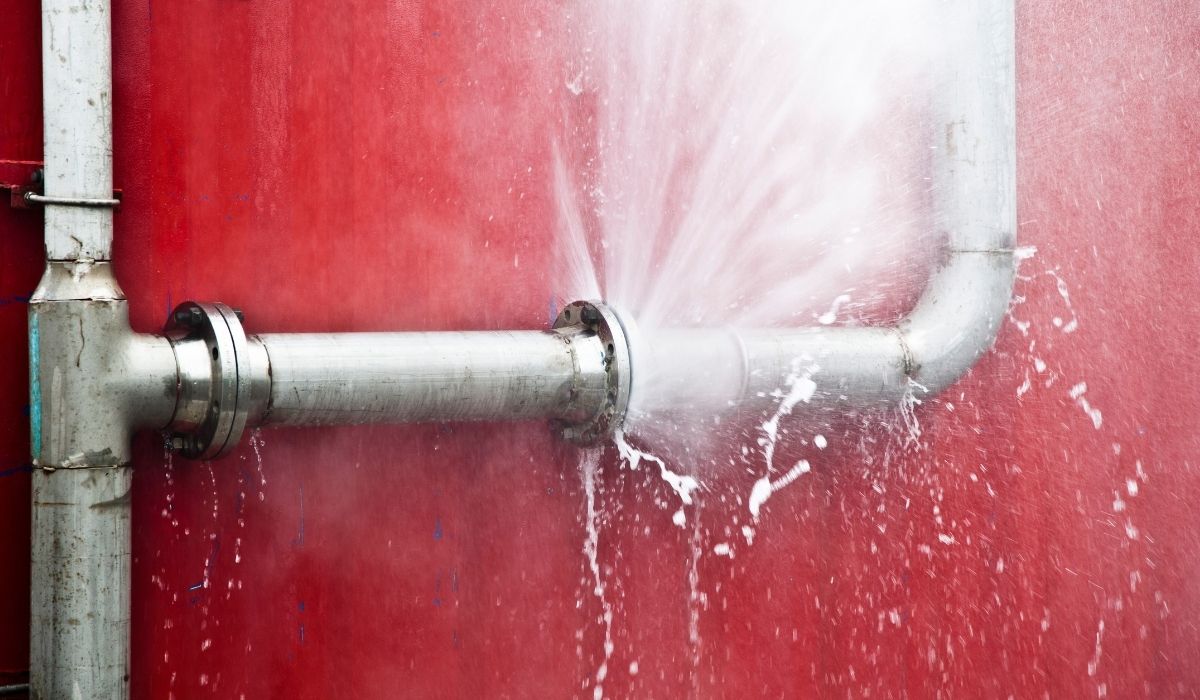Water Damage Scenarios Covered by Home Insurance
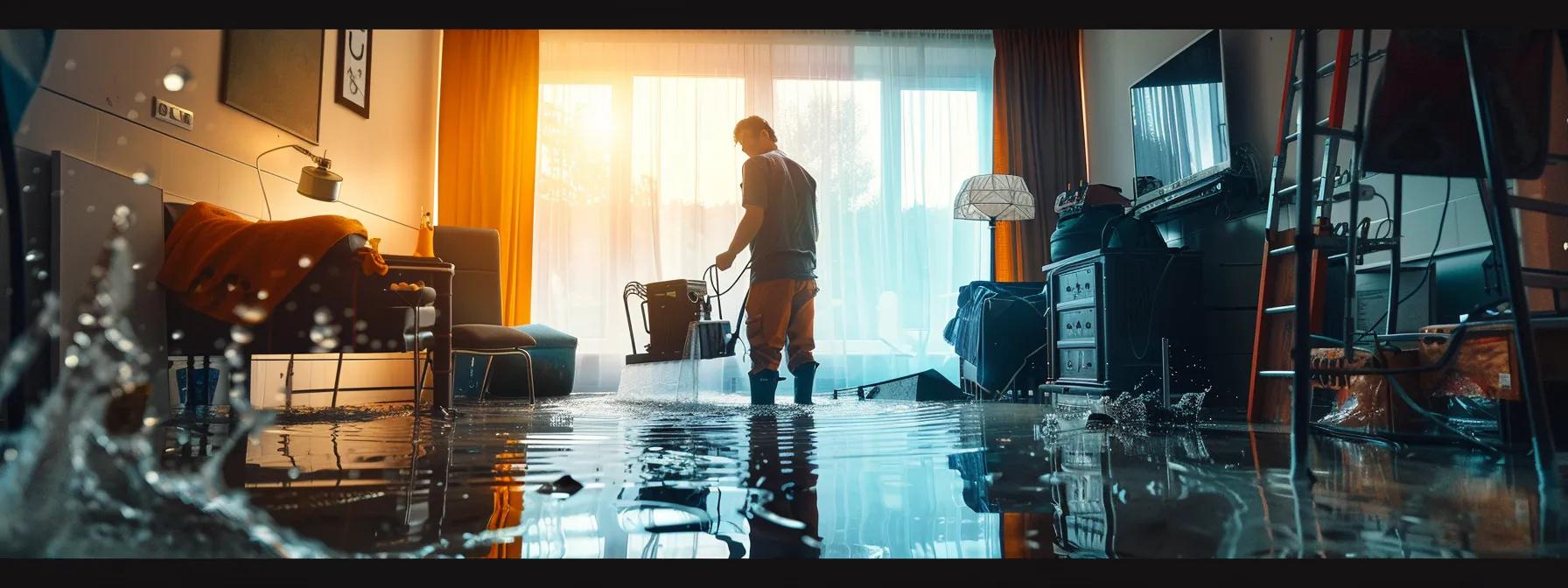
Will Home Insurance Cover My Water Damage?
Homeowners often face unexpected water damage issues, and understanding if their insurance policy covers these damages is critical. Water damage can result from various incidents such as frozen pipe bursts, appliance leaks, roof malfunctions, or even vandalism. This article explores renters and homeowners insurance coverage concerning water incidents, detailing what is generally included, what is excluded, and how additional endorsements may alter your coverage. It also provides guidance on filing a water damage claim, navigating insurance settlements, and taking proactive steps for prevention. By diving into the specifics—from policy exclusions and claim disputes to maintenance tips and product recommendations like water detection devices—the discussion aims to equip readers with the necessary knowledge to manage repair costs and potential issues with their insurance company. With detailed sections supported by research, data, and expert-backed examples, this comprehensive guide targets homeowners seeking answers about reimbursement, water extraction, basement flood insurance claims, and more. Additionally, the article includes a variety of detailed lists and tables to break down the technical aspects of insurance policies and their coverage. With insights relevant to areas including builders risk insurance for homeowners, allstate full coverage, and even commercial property insurance companies, Preferred Restoration Services helps clients navigate the multi-faceted claims process. The following sections explain available coverage, common scenarios for claim approval or denial, and practical advice for clean and effective insurance negotiations.
Understanding Your Home Insurance Coverage for Water Incidents

The first step in determining whether your home insurance covers water damage is to understand the standard coverage provided by most policies. Standard homeowners insurance typically includes protection against sudden and accidental water damages—the type that can result from unforeseen events like burst pipes or accidental appliance malfunctions. However, it is important to note that the exact coverage may vary by provider and policy details, particularly when it comes to water incidents that develop gradually rather than hitting all at once.
Defining What Standard Home Insurance Coverage Typically Includes for Water
Standard home insurance is meant to protect homeowners from unexpected water damage due to events that occur suddenly and without warning. For instance, if a pipe suddenly bursts due to freezing conditions or if an appliance such as a washing machine malfunctions abruptly, these incidents may be covered under your policy. Coverage often extends to repairs and even temporary lodging if the water damage severely disrupts your living conditions. Insurance policies frequently incorporate reimbursement for replacement of building materials, legal liabilities linked to the damage, and potential loss of use of the home. It is essential, however, to check individual policy declarations regarding the specifics. Research from the Insurance Information Institute (2021) outlines that while most conventional homeowners policies cover sudden water damage incidents, they exclude damages that arise from neglect or gradual wear and tear. This coverage may include water extraction and restoration repair costs up to a certain limit, ensuring that homeowners are not burdened by the full repair expenses in the immediate aftermath of an incident.
Distinguishing Between Different Types of Water Damage
Water damage can be classified into various types, depending on the source and speed of occurrence. Sudden water damage might include immediate events, such as a burst pipe or heavy roof leaks following a storm. Conversely, slow or gradual damage, such as that caused by a minor and ongoing leak from an aging roof or appliance drip, is typically not covered because it is considered a maintenance issue. The differentiation is crucial since insurance companies will often assess the root cause when processing claims. For instance, water damage resulting from poor maintenance, like a continuously leaking pipe that wasn’t repaired in a timely manner, may be flagged as negligence. In contrast, a severe burst that causes rapid flooding is generally considered accidental. Additionally, water damage stemming from factors such as erosion or a washing machine malfunction are treated differently based on the rate of occurrence and severity. Peer-reviewed research (McClure et al., 2018, https://doi.org/10.1016/j.jclepro.2018.05.298) highlights that insurance companies prioritize the immediacy and accidental nature of damage to determine claim eligibility.
Reviewing Policy Exclusions Related to Water Damage Insurance Claims
It is critical to fully review policy exclusions in your homeowners insurance document. These exclusions outline scenarios where the insurer will not reimburse for damage. For example, policies often specifically exclude damage caused by flooding from natural disasters, poor maintenance, or long-term seepage issues from foundations. Such exclusions mean that if your basement flood insurance claim arises from gradual water seepage or neglected repairs, the cost will have to be handled out-of-pocket. The exclusions may also detail limits on the reimbursement amounts, which is particularly significant when the damage is extensive. Some policies may offer an option to add a separate endorsement for sewer back-ups, and without it, such incidents will be denied. Excluding flood damage is common as separate flood insurance is typically required under the National Flood Insurance Program. The discussion regarding these exclusions is vital for homeowners to understand their financial risk exposure and whether additional coverage might be needed.
The Role of "Sudden and Accidental" in Home Insurance Coverage Determinations
The phrase “sudden and accidental” is central to most homeowners insurance policies. It is used to differentiate between damage that occurs abruptly and is unforeseeable, versus something developed over time due to neglect. Insurance companies use this definition to assess whether a claim qualifies under the policy’s coverage terms. For example, if a freezer malfunctions unexpectedly and leaks water rapidly, the consequence is likely “sudden and accidental” and thus covered. On the other hand, if the water damage is a result of a long-term, minor leak that was ignored, the claim may be denied. This clarity is essential because it informs homeowners of the importance of proper maintenance to avoid ambiguous situations where the existence of water damage might be interpreted as preventable. The Insurance Information Institute stresses that understanding the conditions that fall under this categorization is key to successful claims processing.
How Additional Endorsements Can Alter Your Home Insurance Coverage
Homeowners often have the option to purchase additional endorsements or floaters that extend coverage in areas not covered by standard policies. For example, adding an endorsement for sewer backup or equipment breakdown can ensure broader protection. These additions might also provide coverage for slow water damage that is typically excluded under standard maintenance clauses. While additional endorsements may increase the premium cost, they can also protect homeowners in scenarios that are likely not covered by a standard policy. An endorsement that includes water extraction services and rebuilding costs can be especially valuable after a major water damage event. Evidence from industry reports indicates that households with added endorsements experience fewer disputes during claim settlements, as the extended coverage clearly delineates what is covered. This not only reduces stress during the claims process but also minimizes the potential for costly out-of-pocket repairs.
Key Takeaways: – Standard home insurance covers sudden and accidental water damage incidents but generally excludes gradual or maintenance-related issues. – Differentiation between immediate and gradual water damage is critical in claim processing. – Policy reviews are essential because insurers typically exclude flood, sewer backup, and neglected maintenance damages. – The term “sudden and accidental” plays a decisive role in determining coverage. – Additional endorsements can significantly broaden protection, albeit at a higher premium.
Common Scenarios Where Home Insurance Coverage Applies to Water Damage
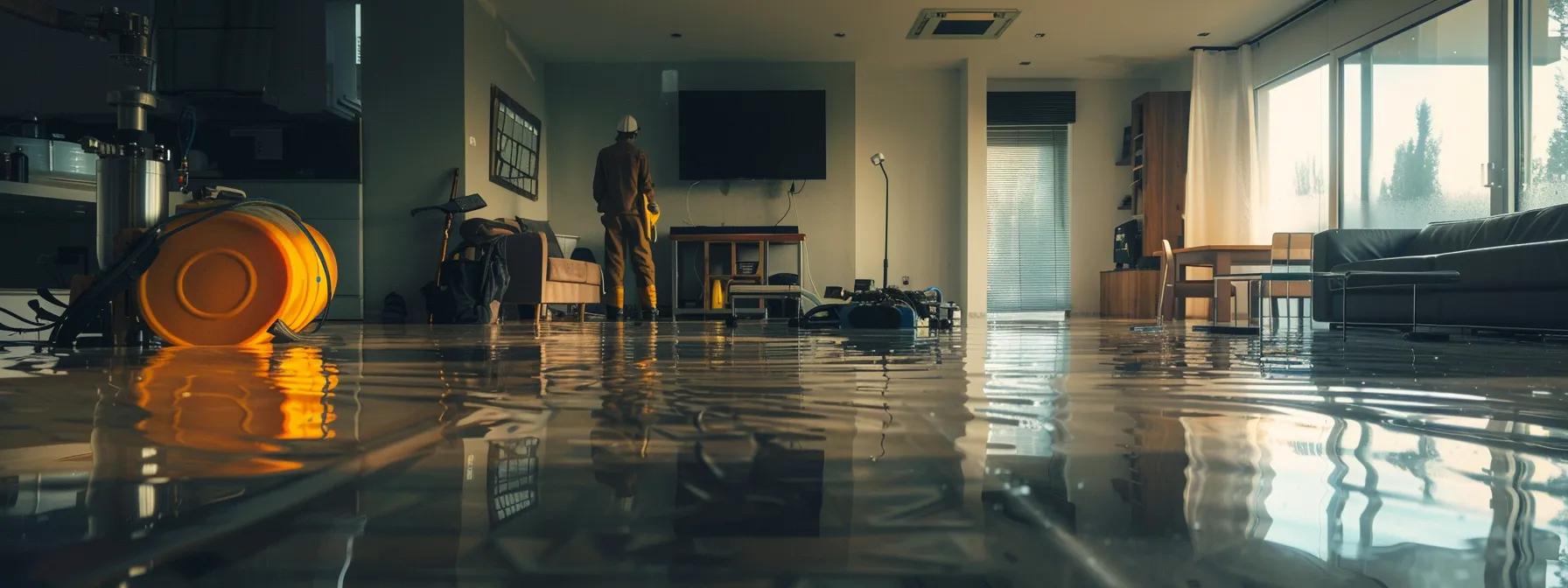
Homeowners face several scenarios where water damage may occur, and knowing which of these situations are covered by homeowners insurance is crucial. From frozen pipes to roof leaks after a storm, understanding the specific circumstances in which insurance may provide reimbursement can help in planning timely responses and repairs. This section delves into common scenarios, supported by detailed explanations and examples, illustrating both insured and non-insured water damage events.
Frozen Pipe Bursts and Resulting Interior Harm
Frozen pipes are a common problem during the winter months, particularly in regions where temperatures drop significantly. When water inside a pipe freezes, it expands, leading the pipe to burst suddenly. This sudden burst can cause extensive interior damage, flooding walls, floors, and personal belongings. Home insurance policies generally cover the resulting water damage if the burst is sudden and accidental. However, coverage is typically contingent on the homeowner having taken reasonable steps to prevent such occurrences, such as maintaining a proper home heating system. Homeowners should also be aware that while damage from a burst pipe is covered, the cost for repairs related to the pipe itself may not be unless there’s an endorsement in place.
Effective mitigation steps include shutting off the water supply immediately upon noticing a burst and contacting professionals for water extraction and repairs. Research data indicates that prompt action can significantly reduce the total damage cost. For instance, a study by the American Society of Home Inspectors (ASHI, 2019) found that immediate water extraction can reduce damage extent by up to 40%. Homeowners should document all actions and engage qualified restoration experts, preferably those experienced in water damage restoration. Moreover, any subsequent claim, such as a basement flood insurance claim related to frozen pipe bursts, will be evaluated based on the timeliness of the response and the maintenance history of the property.
Appliance Leaks or Malfunctions Leading to Water Issues
Appliances like washing machines, dishwashers, and refrigerators can develop leaks or malfunctions that result in water damage. Home insurance policies often cover incidents where an appliance suddenly fails and causes water damage to the floor, walls, or personal property. For example, a washing machine that unexpectedly overflows due to a malfunction is likely to be regarded as a sudden and accidental incident. To successfully file a claim, homeowners must provide evidence of the incident, such as photographs and maintenance records. Regular professional servicing and timely repairs support the argument that the malfunction was unpredictable.
The sudden nature of such an appliance malfunction usually meets the “sudden and accidental” criteria defined by insurance companies. If the appliance had a long history of issues or if its maintenance was neglected, the claim might be disputed. This scenario underscores the importance of preventive maintenance as well as accurate record-keeping. Homeowners insurance also sometimes covers replacement costs for damaged items, provided the policy’s limits and deductibles allow it. Given that these incidents can occur without warning, insurers often advise annual inspections for major appliances to reduce the risk of recurrence.
Water Damage From Leaking Roofs After a Storm
Storm-related roof leaks are another frequent concern for homeowners. After heavy rain or wind, a roof might develop leaks from damaged shingles, poor installation, or systemic wear and tear that is exacerbated during the storm. When water seeps through the roof and into the attic or interior spaces, it can result in substantial structural damage, mold growth, and damage to stored items. Home insurance policies usually cover this type of water damage if it is tied to the storm event and is not the result of preexisting conditions, such as neglected roof maintenance.
A critical factor in claim evaluation is proving that the leaking was sudden and directly associated with the storm. Homeowners should promptly initiate temporary repairs and document the event with photos and detailed notes. Insurance adjusters will review weather reports and inspection findings to verify the claim’s legitimacy. In situations where roof leaks are attributed to a lack of proper roof upkeep, coverage may be denied. Therefore, ensuring regular roof inspections and timely repairs is essential for maintaining full coverage against such eventualities.
Accidental Overflows From Sinks or Bathtubs
Accidental overflows from sinks or bathtubs represent another common scenario. Such overflows are frequently unexpected and can cause immediate damage to adjacent floors, walls, and furnishings if left unaddressed. Typically, these incidents are categorized as sudden and accidental, particularly when they result from a momentary error or malfunction rather than a chronic problem. However, if the overflow is due to neglected maintenance, such as a slow clog that was never addressed, the claim could be rejected. The clarity of evidence plays a decisive role; prompt reporting and professional repair records support a successful claim.
Upon the discovery of an overflow, it is recommended that homeowners turn off the water supply and call professional water extraction services immediately. Quick action not only minimizes further damage but also strengthens the claim when documenting the incident. Homeowners insurance may cover remedial repairs, including water extraction, drying, and subsequent restoration activities, as long as the cause is deemed accidental and not preventable by regular upkeep.
Vandalism Resulting in Water Release Inside Your Home
While less common than other water damage scenarios, vandalism that results in water release inside the home also falls under potential coverage. In this case, vandals may deliberately break fixtures such as water pipes or appliances, causing sudden and extensive water damage. Typically, if the water damage is directly attributable to vandalism, a homeowner’s policy covering vandalism or malicious mischief will address the costs associated with cleanup, restoration, and repair. This coverage can be especially important in urban areas where such occurrences, although sporadic, impose significant repair costs. Documentation, such as police reports and repair estimates, becomes indispensable in these cases.
In assessing such claims, insurers will consider the immediacy of the incident and whether any warning signs were present. In most situations, if all conditions meet the insurance policy’s requirements—especially the “sudden and accidental” clause—the claim is processed favorably. Homeowners are advised to secure additional endorsements or security systems to further protect against vandalism-related water damage events.
Key Takeaways: – Frozen pipe bursts cause extensive interior damage and are typically covered if promptly reported. – Appliance malfunctions, like washing machine overflows, are insured provided there is evidence of sudden failure. – Storm-induced roof leaks are considered sudden and accidental if maintenance was current. – Accidental overflows from sinks or bathtubs are usually covered with proper documentation. – Vandalism-induced water damage is covered under vandalism or malicious mischief clauses with appropriate evidence.
Situations Where Water Damage Insurance Claims Are Often Denied
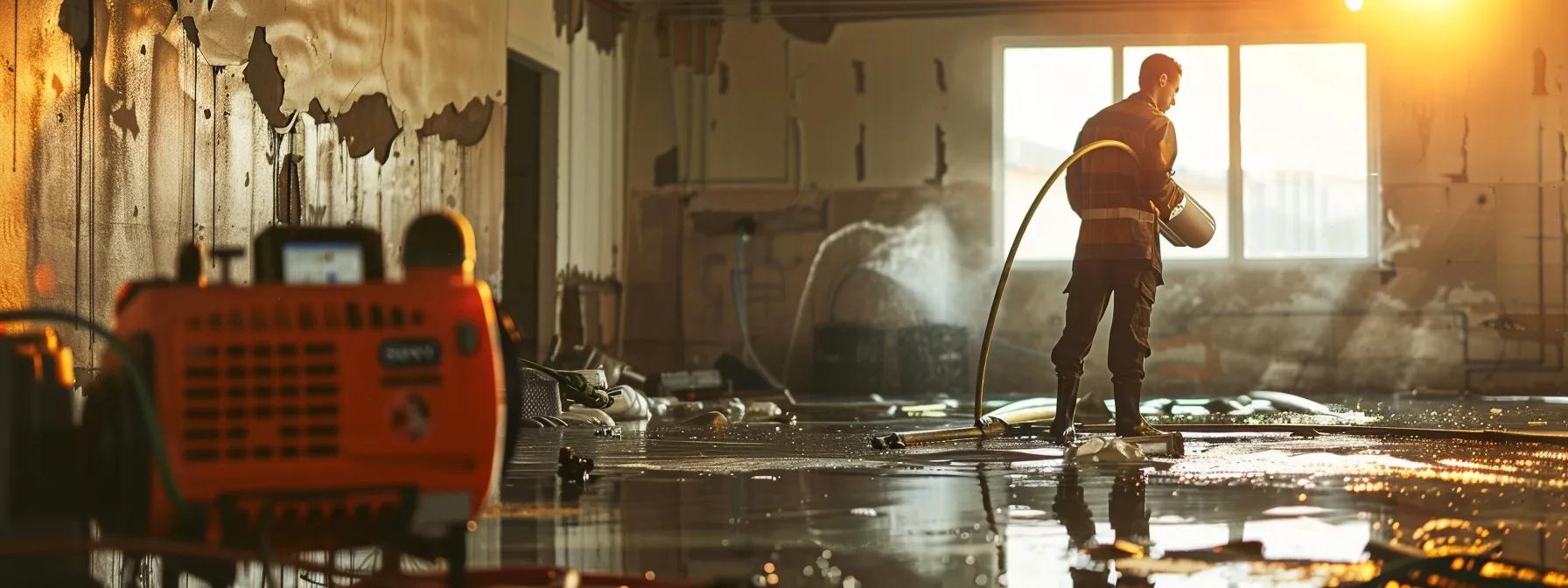
Despite the many scenarios where water damage is covered, there are several situations where homeowners find that their claims are denied. Insurance companies employ strict criteria before approving reimbursement, and certain types of water damage consistently fall outside the bounds of standard coverage. Understanding these limitations is essential for homeowners in order to mitigate risk and fully prepare for potential water damage incidents.
Flood Damage Is Not Part of Standard Home Insurance Coverage
Homeowners must be aware that flood damage, particularly that resulting from natural disasters like hurricanes or heavy rains, is ordinarily excluded from standard home insurance policies. Instead of being covered under homeowners insurance, flood damage requires a separate flood insurance policy, typically provided through the National Flood Insurance Program (NFIP). This means that if water enters your home due to rising water levels from a storm or river overflow, any resulting damage will not be reimbursed by your regular policy. This is a critical exclusion that homeowners need to consider, especially if they reside in a flood-prone area. As a preventative measure, affected parties often purchase additional flood coverage to protect against this specific hazard. In the absence of dedicated flood insurance, homeowners must bear the full cost of repairs, which can include water extraction, mold remediation, and restoration of the affected areas.
Gradual Water Damage From Poor Maintenance or Neglect
Insurance companies are particularly strict when it comes to damages caused by negligence or poor maintenance. Gradual water damage resulting from continuously leaking pipes, neglected roof repairs, or long-term moisture issues typically does not claim coverage because these issues are considered preventable. The fundamental idea is that an insurance policy is meant for unexpected and accidental events, not for issues that arise from a lack of proper home maintenance. Evaluators will scrutinize maintenance records and repair histories to determine if the damage could have been prevented. If it turns out that the damage occurred over time due to unaddressed issues, then the insurer will likely deny the claim. This denial can result in significant repair expenses falling solely on the homeowner, affecting both the structural integrity of the home and its value.
Sewer Backups Without Specific Endorsement Coverage
Water damage due to sewer backups is another common claim that often faces denials. Because sewer backups are usually considered separate from the typical water damage defined by standard policies, homeowners must purchase additional endorsement coverage to safeguard against such incidents. Without this endorsement, if sewage or contaminated water enters through a sewer system failure, the claim will not be covered. This exclusion is based on the high risk associated with sewage-contaminated water causing not only structural damage but also health hazards. Homeowners in older homes or in areas with aging sewer infrastructure are especially vulnerable, making additional coverage a prudent safeguard. Research by the Insurance Information Institute (2022) shows that endorsements for sewer backup are increasingly becoming a recommended addition, given the rising incidents observed in many urban regions.
Ground Seepage or Foundation Leaks
Ground seepage or foundation leaks often develop slowly and can be the result of improper drainage, soil erosion, or a damaged foundation. Because these are typically gradual processes that occur over time, they are generally not covered under homeowners insurance. Insurers argue that such damage is a maintenance issue that the homeowner is responsible for rectifying through regular upkeep and inspections. If water permeates through cracked foundations or seepage through soil accumulations, these conditions usually indicate pre-existing vulnerabilities. As such, claims based on water damage from ground seepage are commonly denied. In these cases, addressing the problem may require structural repairs, additional waterproofing, and improved drainage solutions, all of which can be substantial expenses not mitigated by a standard policy.
Mold Growth Resulting From Untreated Chronic Moisture
Mold growth is often a consequence of prolonged moisture exposure rather than a sudden water damage event. Homeowners insurance generally does not cover mold damage if it is deemed to be the result of long-term neglect or chronic moisture intrusion. Although some policies may cover mold remediation if the mold growth is a direct result of a covered water damage incident, most routine mold problems caused by extended water leakage or humidity issues will not be reimbursed. This exclusion is based on the understanding that mold prevention should be a regular part of home maintenance. In addition, mold claims are complicated by the fact that remediation often requires ongoing, long-term treatment rather than a one-time repair. Studies indicate that if mold is left untreated for more than 48 hours, the remediation costs increase significantly, which further discourages insurers from extending coverage for these situations.
Key Takeaways: – Flood damage is excluded from standard policies and requires separate flood insurance. – Gradual damage from maintenance neglect is not covered. – Sewer backup incidents need specific endorsements to be included. – Ground seepage or foundation leaks are considered maintenance issues and are typically excluded. – Mold resulting from chronic moisture is generally not reimbursed unless directly tied to an accidental event.
The Process of Filing a Water Damage Claim Successfully
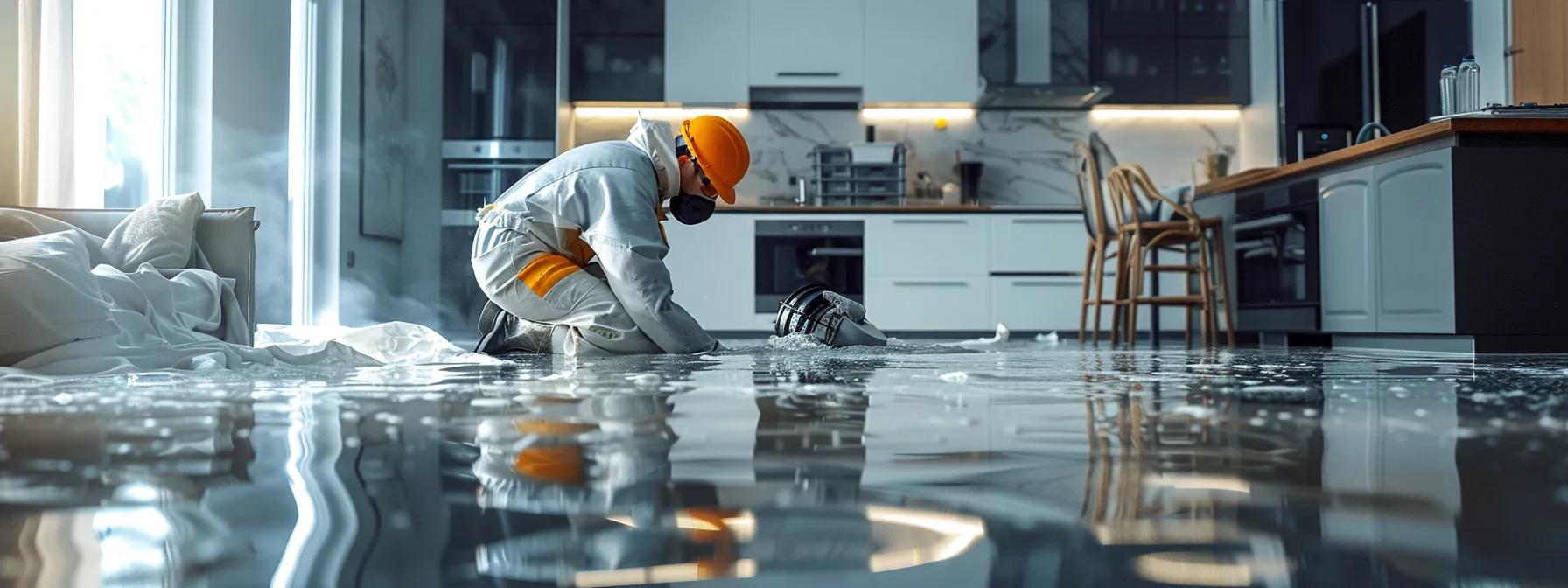
Successfully filing a water damage claim requires a systematic approach from immediate action and documentation to cooperating with insurers. Homeowners must be proactive in mitigating further damage and collecting evidence to support their claim. From the moment an incident is discovered, detailed documentation and a timely report to the insurance company play key roles in ensuring a smooth claims process.
Immediate Steps to Mitigate Further Water Damage
The first steps after discovering water damage include mitigating further harm to your property. Homeowners should immediately shut off the water supply, move valuables to safe areas, and contact professional restoration companies for water extraction. Quick action not only reduces the overall damage but also supports your insurance claim by demonstrating prompt mitigation efforts. In many instances, insurers require evidence that you took reasonable steps to limit the damage. This may involve hiring professionals to begin water removal and drying processes, even before the insurance adjuster’s visit. Additionally, temporary repairs such as securing the roof against further leaks or using tarps to cover exposed areas may also be necessary. Document every action taken—photograph the affected areas, retain invoices, and compile written accounts of the mitigation efforts. This documentation will be critical when filing your claim.
Documenting the Extent of the Water Damage Thoroughly
Accurate and detailed documentation is key to a successful claim. Homeowners should photograph all areas affected by water damage from multiple angles and take detailed notes that include dates, times, and the estimated extent of damage. It is advisable to create an inventory list of damaged items, whether personal property or structural components like flooring and drywall. In some cases, professional assessments may be needed to provide an expert opinion on the damage’s severity. Research indicates that well-documented claims are processed faster and with fewer disputes (Insurance Journal, 2020). Ensure the documentation covers initial damages as well as any subsequent issues, like mold growth or weakening of structural integrity, that might develop over time. These records, including receipts from repair companies and water extraction services, help build a compelling case that the incident meets the criteria of being sudden and accidental.
Notifying Your Insurance Company About the Incident Promptly
After addressing immediate mitigation and documentation, the next step is to notify your insurance provider as soon as possible. Prompt notification is not only a policy requirement in many insurance contracts but also expedites the overall claims process. When you contact your insurer, be prepared to provide detailed information about what happened, the actions taken, and the extent of the damage. It is advisable to follow up oral communications with a written report, which can be sent via email or mail, ensuring there is an official record. The sooner you file the claim, the quicker an adjuster can be sent to inspect the damage and provide an estimate. Additionally, early reporting might minimize disputes about the condition of your home before and after the incident.
Cooperating With the Insurance Adjuster During Inspection
An insurance adjuster will eventually visit your property to assess the damage. Cooperation during this process is paramount, as the adjuster’s report plays a crucial role in determining claim approval. Provide them with all the documentation you have gathered, including photographs, repair estimates, and a detailed written record of your mitigation efforts. Be transparent about the circumstances surrounding the damage, and clarify any maintenance issues that might otherwise be confused with neglected repairs. Demonstrating proactive maintenance history can help your case, even if the damage occurred suddenly. Adjusters are trained to differentiate between covered incidents and those resulting from long-term neglect; hence, clarity and honesty during the inspection can facilitate a fair evaluation of your claim.
Understanding Your Rights and Responsibilities When Filing a Water Damage Claim
Homeowners must be aware of both their rights and responsibilities when submitting a water damage claim. Your insurance policy is a legally binding contract outlining what is covered, so reviewing it carefully is essential. You have the right to dispute any findings or settlement offers that seem inadequate given the extent of the damage. At the same time, it is your responsibility to ensure that all claim procedures are followed correctly, including reporting the incident promptly, providing accurate documentation, and cooperating with any inspections. If you believe your claim is being offered an unjust settlement, consider seeking assistance from a public adjuster or legal professional specializing in insurance disputes. Familiarity with your policy’s language regarding “sudden and accidental” damage versus gradual deterioration is crucial and can be used to advocate more effectively for a full reimbursement.
Key Takeaways: – Immediate mitigation, such as shutting off water and contacting professionals, is essential to minimize further damage. – Thorough documentation, including photos and detailed notes, supports your claim. – Prompt notification to your insurance company ensures faster processing. – Cooperation with the insurance adjuster improves review accuracy. – Understanding your rights and responsibilities helps you advocate effectively during the claims process.
Navigating Water Damage Insurance Claims and Settlements
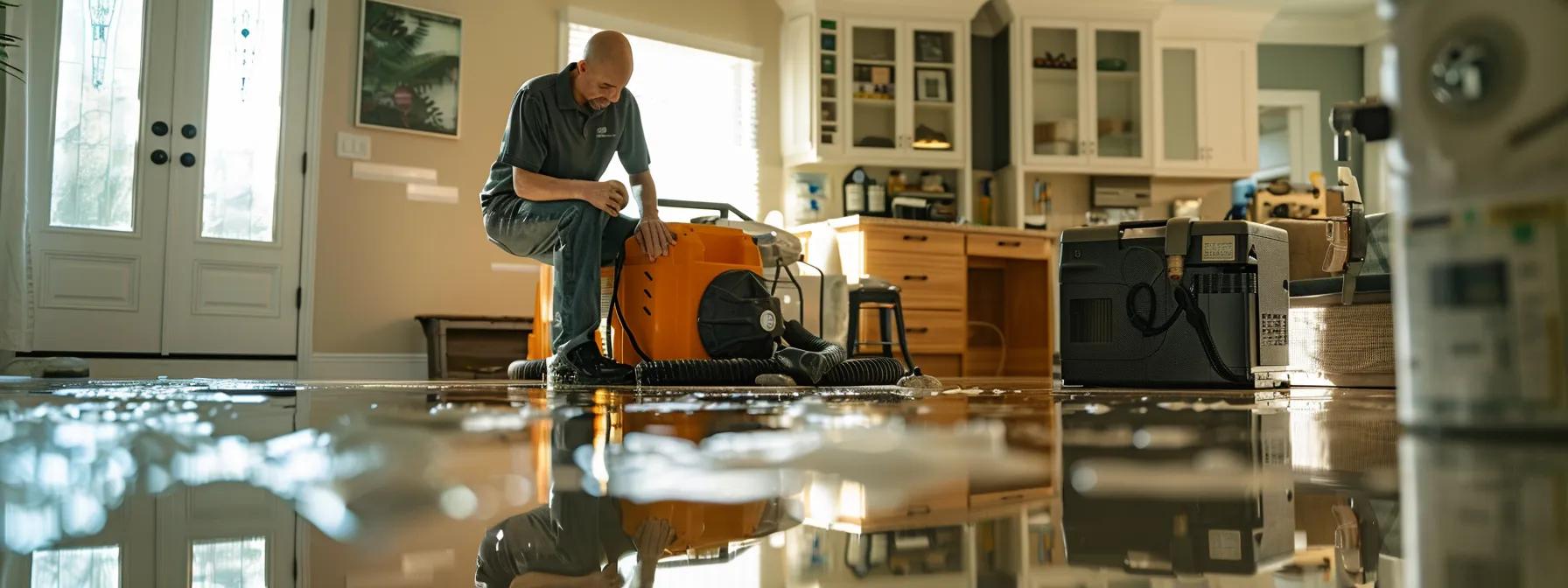
After filing a water damage claim, the next phase involves navigating through the claims process and eventual settlements. Homeowners must prepare for what comes after submitting their claim, including negotiating a settlement and coordinating repair efforts with contractors. This section provides a detailed roadmap on what to expect post-submission and offers strategies for handling disputes, ensuring that your restoration efforts are efficiently coordinated while protecting your financial interests.
What to Expect After Submitting Your Water Damage Insurance Claim
Once your claim has been submitted, your insurance company will send an adjuster to inspect the damage. You can expect a thorough review that considers all documentation submitted along with any additional evidence provided during the inspection. The insurance adjuster will inspect the property, and once the evaluation is complete, they will prepare an estimate. This estimate forms the basis for the settlement offer. Typically, you will receive communication regarding the next steps, including a timeline for claim processing. It is important to remain in contact with your insurer and follow up as necessary. Delays can occur, particularly during peak seasons or if additional documentation is required, so maintaining clear and prompt communication is key to a smooth process.
Reviewing Your Settlement Offer From the Insurer
After the inspection and assessment, the insurer will provide a settlement offer. This offer is based on the adjuster’s evaluation of the damage and the policy coverage limits. It is crucial to review the settlement offer carefully to ensure that it reflects the full extent of the documented loss. Compare the offer with the repair estimates and any supporting evidence you’ve compiled. If the offer appears insufficient, you have the right to negotiate or dispute it. Negotiations may involve providing additional documentation or even obtaining independent estimates from contractors. Understanding the specific terms in your policy, such as replacement cost versus actual cash value, will help clarify the value of your claim. In some instances, if a dispute cannot be resolved directly with the insurer, hiring a public adjuster or consulting with an attorney experienced in insurance claims might be necessary to advocate for a fair settlement.
Options if Your Water Damage Insurance Claim Is Disputed or Denied
Should your claim be disputed or denied, homeowners have several options to consider. First, formally appeal the decision provided by your insurance company. This process typically involves submitting additional evidence and a written explanation of why the decision appears incorrect. Many insurers have internal review processes that allow for reconsideration. Second, if the internal appeal does not result in a satisfactory settlement, seeking the services of an independent public adjuster may help counter the insurer’s estimate. A public adjuster works on your behalf to maximize the claim payout. Legal action is another last resort if negotiation fails. It is essential to set realistic expectations and to document all communications and efforts made during the negotiations, as these records will be invaluable if the situation escalates.
Working With Contractors for Repairs Covered by Your Claim
Once a settlement is agreed upon, coordination with contractors becomes the next critical step. Many insurance companies require that repairs are carried out by licensed professionals. Homeowners should obtain multiple contractor estimates to compare the scope of work and cost. Having a well-documented repair plan aids in ensuring that the insurance payout sufficiently covers the necessary work. Contractors with experience in water damage restoration, particularly those familiar with cases like basement flood insurance claims or repairs involving water extraction and mold remediation, are preferred. Engaging a reputable contractor not only helps to restore your home to its previous condition but may also protect the integrity of future claims or policy renewals.
Keeping Records of All Communications and Expenses
Throughout the entire claims process, maintaining thorough records is indispensable. Detailed records of every step—from initial damage assessment and mitigation to contractor estimates and adjuster communications—ensure that you have a comprehensive paper trail should any disputes arise. Keep exact copies of all photographs, invoices, receipts, and emails related to the damage and the subsequent restoration efforts. This documentation provides a strong basis for review if additional disputes occur regarding settlement amounts or coverage details. Insurance companies often treat well-documented claims more favorably because they clearly demonstrate the scope and severity of the water damage.
Key Takeaways: – Expect an inspection and detailed evaluation after claim submission. – Review the settlement offer carefully and negotiate if necessary. – If disputes arise, consider appealing or engaging a public adjuster. – Coordinate with experienced contractors for quality repairs. – Retain comprehensive records of all communications and expenses to support your claim.
Proactive Measures to Protect Your Home and Home Insurance Coverage
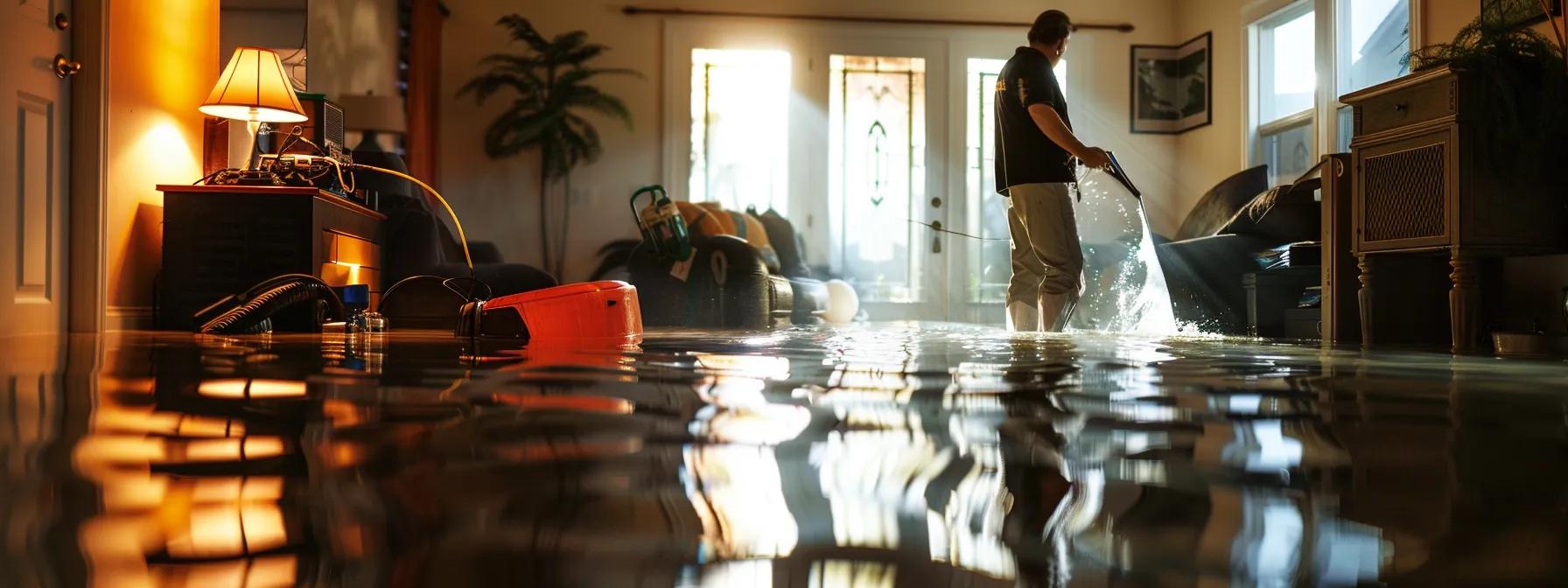
Preventing water damage not only safeguards your home but can also help ensure that your insurance claims process is smooth should an incident occur. Homeowners can take various proactive steps to maintain their property, reducing the likelihood of water damage incidents and the a need for complex claims. By focusing on regular maintenance, installing detection devices, and ensuring that repairs are timely, property owners can both protect their assets and potentially reduce insurance premiums over time.
Regular Maintenance to Prevent Common Water Damage Causes
Regular maintenance is one of the most effective ways to prevent water damage. Homeowners should schedule routine inspections of plumbing systems, roofs, and appliances to detect any potential issues early. This includes testing for leaks, checking the condition of water pipes for signs of corrosion, and ensuring that gutters and downspouts are decluttered. Regular maintenance reduces the risk of small leaks turning into catastrophic failures that can lead to major restoration costs. Preventative measures might also involve routine cleaning of sewer lines, inspecting basements for signs of dampness, and updating outdated fixtures. Consistent maintenance demonstrates to insurance companies that you have taken reasonable steps to prevent damage, which might improve your claim outcomes if an incident occurs. Additionally, maintaining a log of repairs and inspections can support your claim by proving that any water damage was not due to neglect.
Installing Water Detection Devices and Automatic Shutoff Valves
Technological advancements have made it easier for homeowners to monitor and mitigate water damage. Installing water detection devices, such as leak sensors near appliances and in basements, can alert homeowners at the first sign of an issue. These devices, combined with automatic shutoff valves that cut water supplies when a leak is detected, provide a proactive approach to preventing extensive damage. Such systems are especially vital in colder climates where frozen pipes are a common problem, as they can quickly detect and halt water flow before a pipe burst causes widespread damage. Many smart home systems now integrate these features, sending notifications directly to your smartphone so that you can take immediate action. These installations are not typically mandated by insurers, yet they play a significant role in reducing overall repair costs and mitigating damage severity. Consequently, some insurance providers may even offer discounts on premiums for homes equipped with these advanced protective measures.
Understanding How Unresolved Maintenance Affects Future Water Damage Insurance Claims
Failure to address minor maintenance issues can have serious repercussions on future insurance claims. Unresolved problems, such as small leaks or damaged roofing, can deteriorate over time and lead to severe water damage. Insurers may view these issues as signs of negligence, potentially leading to claim denials. The key is to document and resolve any maintenance issues swiftly. Regular check-ups by certified professionals ensure that potential water damage risks are identified and mitigated before they escalate. Homeowners should keep detailed records of all maintenance activities and repairs done as a part of home upkeep. Maintaining these records is crucial during the claims process, as they act as evidence that the homeowner has consistently invested in the proper care of the property.
Periodically Reviewing Your Home Insurance Coverage for Adequacy
It is advisable for homeowners to periodically review their home insurance policies to ensure that they have adequate coverage in light of any home improvements or changes in the property’s value. Water damage incidents can evolve over time, and so can the overall risk profile of a home. Regular policy reviews can help determine if any modifications or additional endorsements are necessary—such as for sewer back-ups or flood damage—to ensure that all potential water damage scenarios are covered. Additionally, homeowners may want to engage in discussions with their insurance companies about the specific implications for water damages—covering aspects like water extraction, repairs from freezing episodes, and any other emerging risks. Through these periodic evaluations, homeowners can adjust their coverage to reflect the current state of the property and mitigate financial risks.
Preparing Your Plumbing for Freezing Temperatures
In regions prone to freezing temperatures, preparing your plumbing is an essential component of preventing water damage. Simple measures such as insulating pipes, using heat tape, and ensuring that interior spaces where plumbing is located remain adequately warm can prevent pipes from freezing and bursting. Homeowners should perform these preparations before the onset of winter or extreme cold spells to reduce the risk of sudden and severe water damage. Regular inspections of these preventative installations allow for timely repairs if any issues are detected. By adopting these proactive measures, homeowners not only minimize the risk of costly repairs but also improve the likelihood that any claim arising from water damage due to freezing conditions will be processed favorably under the “sudden and accidental” clause.
Key Takeaways: – Regular maintenance is key to preventing water damage and supporting insurance claims. – Water detection devices and automatic shutoff valves significantly reduce incident severity. – Unresolved maintenance issues can jeopardize future claim approvals. – Periodic policy reviews help ensure coverage meets current property needs. – Preparing plumbing for freezing temperatures minimizes severe burst-related damages.
Frequently Asked Questions
Q: Does standard home insurance cover water damage from burst pipes? A: Yes, most standard home insurance policies cover sudden and accidental water damage, such as that from burst pipes, provided the incident is not due to long-term neglect or poor maintenance.
Q: Why are claims for gradual water damage often denied? A: Claims for gradual water damage are usually denied because the damage occurs over time due to maintenance neglect, which is viewed as the homeowner’s responsibility rather than an accidental event.
Q: What should a homeowner do immediately after discovering water damage? A: Immediately shut off the main water supply, document the damage with photos and notes, and contact a professional for water extraction and repairs. Prompt notification to your insurer is also vital.
Q: Can additional endorsements improve water damage coverage? A: Yes, purchasing additional endorsements such as sewer backup or equipment breakdown coverage can extend your policy to cover specific water damage scenarios that are not included in standard policies.
Q: How does proactive maintenance affect insurance claims? A: Regular maintenance and timely repairs help prevent extensive water damage and support your claim by demonstrating that you have taken reasonable steps to reduce risks, thereby reducing potential disputes with your insurer.
Q: Are flood damages covered under standard home insurance? A: Flood damages are generally not covered under standard home insurance policies. Separate flood insurance is required under the National Flood Insurance Program (NFIP).
Final Thoughts
Understanding the intricacies of water damage insurance coverage is essential for homeowners. This article highlighted how standard policies differentiate between sudden and gradual water damage, the importance of thorough documentation, and the steps to take immediately after an incident. Homeowners should also consider additional endorsements and proactive maintenance measures to bolster protection against water damage. Being well-informed not only aids in successful claims processing but also minimizes potential repair costs through effective prevention.



